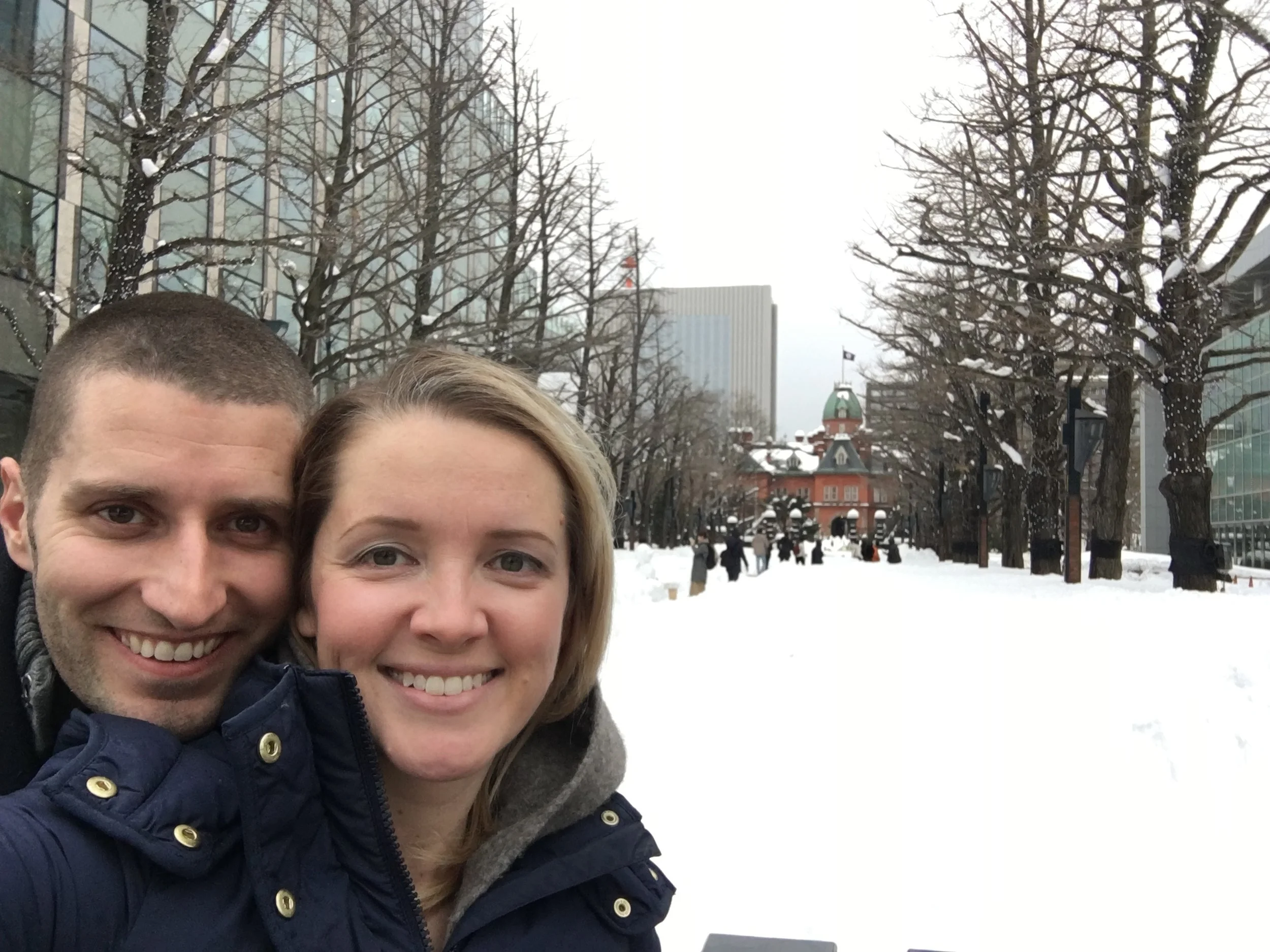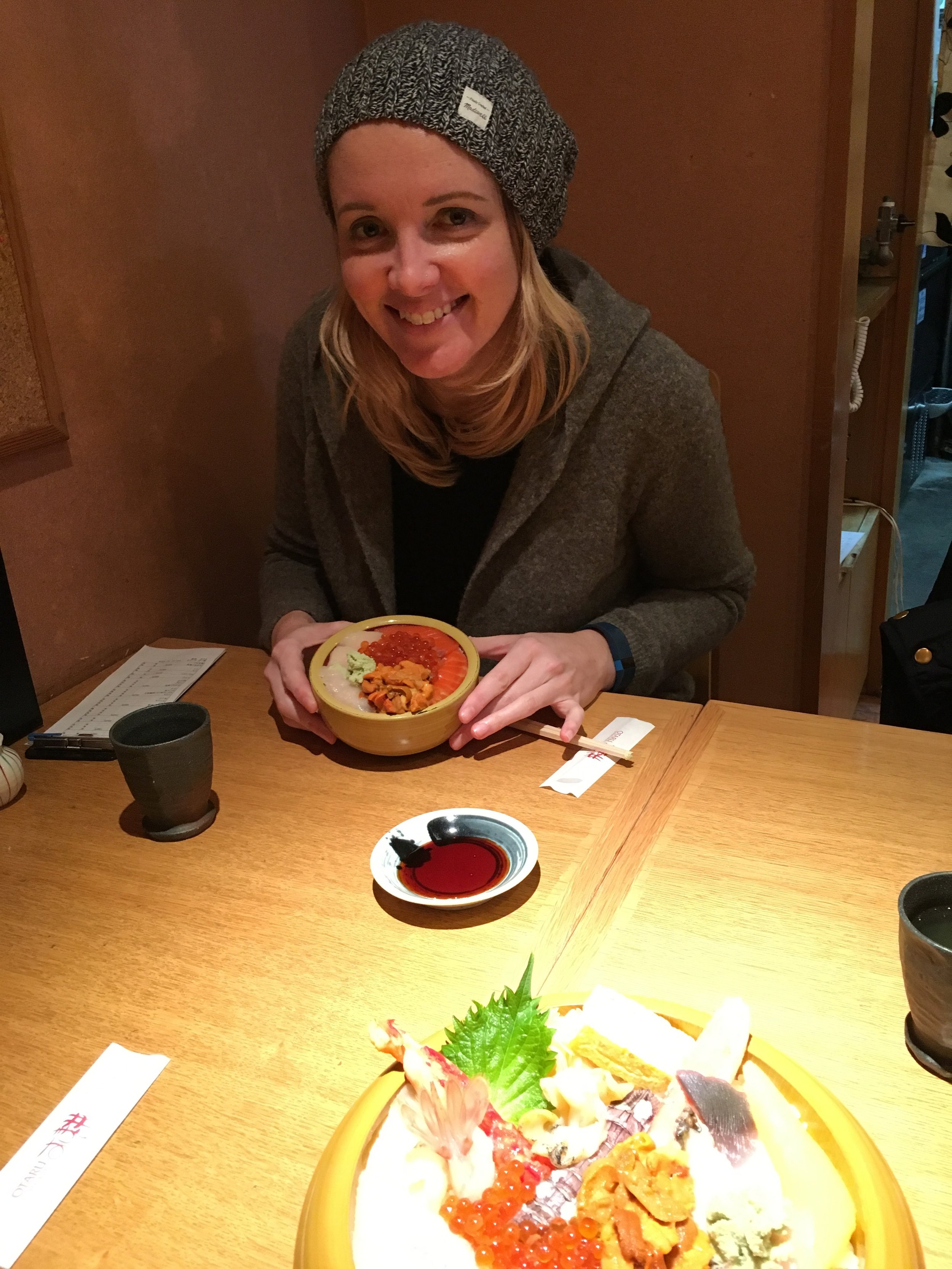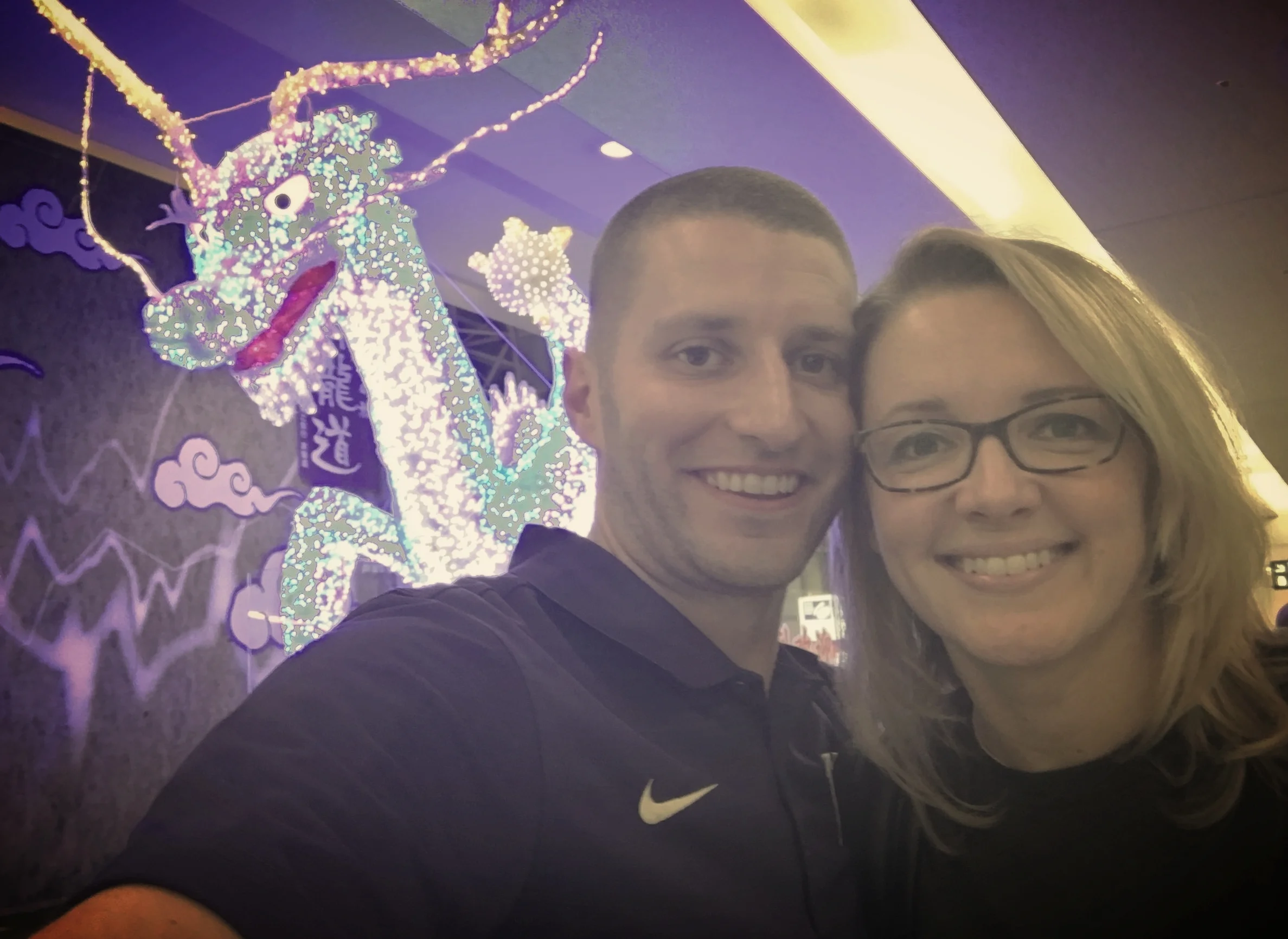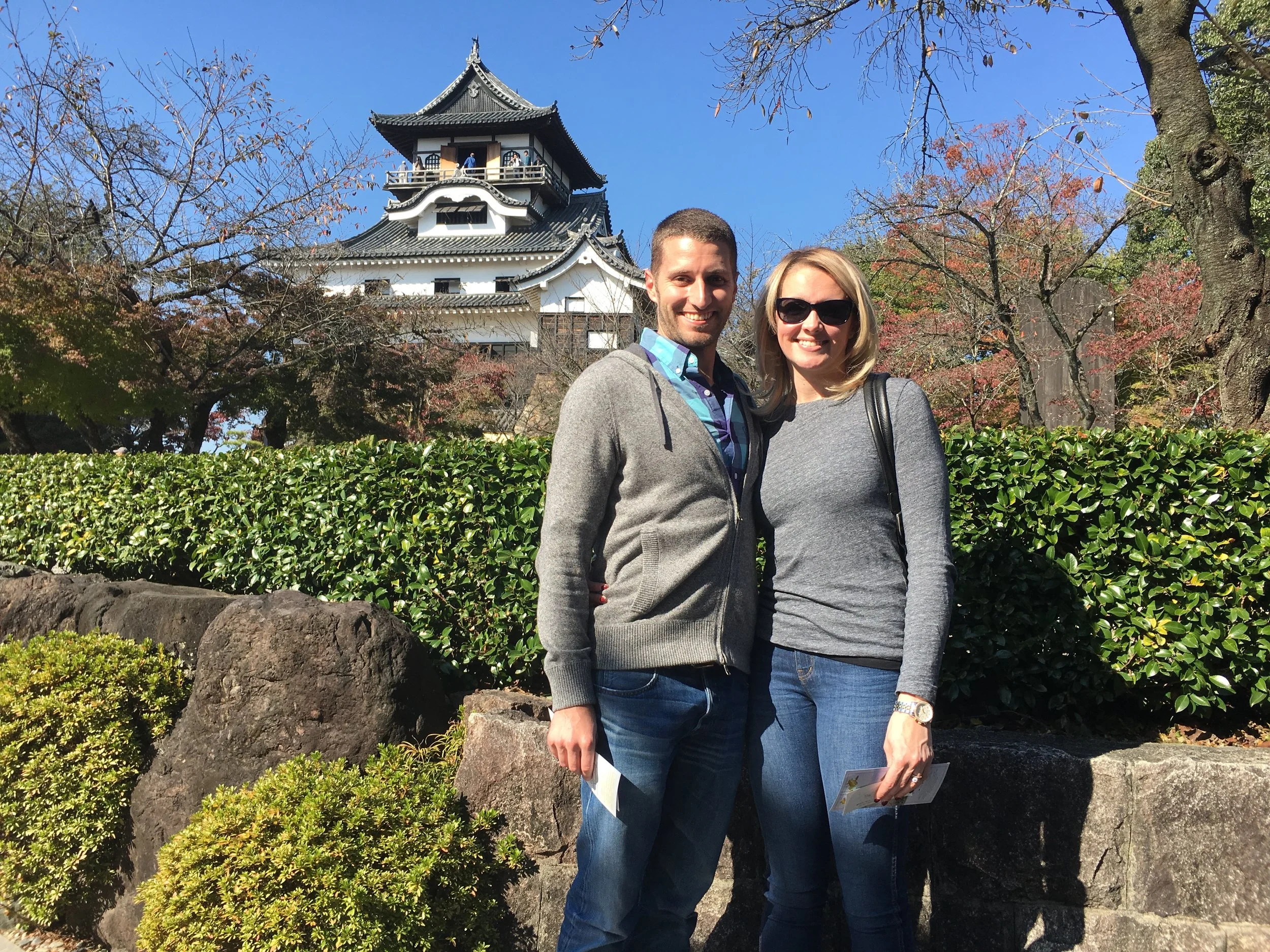Highlights
Wow. I was aware I had taken a long time to post anything and in the interest of getting something up, we listed some of our favorite things sheerly choosing by fun (and not necessarily culturally as you will see) and I picked 5 that we had done together + my learning of Kanji to share with you. Here are five really fun experiences we've had so far.
FLYING BUSINESS CLASS
Moving internationally for a professional job means flying business class. Justin suggested this as one of the top experiences so far for Japan and at first I dismissed it as not cultural, then I thought - our blog, our rules :-). Up until about a week before hand, I thought this meant having a few inches more of leg room like we had had on some small upgrade for fun on another trip. It just meant I could use the restroom without having to ask 8 people to get up. Then Justin informed me it was basically first class and we get to use the lounge before hand!! Well, I can say I appreciated it more having NEVER flown business or first class before until I was 35. We arranged our fancy dinners and kindle for photographs on our white linen-covered tray table. It felt BLISSFUL to be able to lay flat and sit up whenever I wanted. They gave us face mist, a toiletries pack, real headphones… there was a powered divider between us for privacy. I rolled the divider up on Justin, then video taped me slowly rolling it down to reveal his disapproving face staring at me, which I then surprise-attack squirted with my face mist. The flight attendants kept offering more Bordeaux which I kept accepting - I am not sure who was more surprised - me that they continued to bring it by or them at me enjoying about 6. The lavatory was so big I changed into my pajamas. We had steak and ice cream and I had some whiskey. When the plane landed after about 11 hours I could have continued flying longer. Yep it was great.
FIRST RIDE ON THE SHINKANSEN - BULLET TRAIN
Justin and I both voted this one in. Our first rides were separate and I only have photo evidence of mine. Going on to the platform for the first time, hearing the unique "electronic turkey" sounding siren alerting the arrival or departure of a train, seeing the train with the long dome-like futuristic front gliding in in front of the business men in black suits and white shirts will remain forever in my memory. To later learn it was first opened in 1964 for the Tokyo Olympics is an entirely other matter (!?!?). Getting on, finding my seat and feeling the train roll out of the station slowly picking up speed until the scenery outside is whirring by to the slightest high pitch sound of the train. I was giddy like a kid - this is one of those experiences where you FEEL you are somewhere else on the planet - a completely new experience.
HOKKAIDO
Best food and snow of our lives - the food is on another level entirely. We went to Hokkaido for snowboarding and one night for dinner went to this unassuming family restaurant with florescent lights and wood paneling. It had the air of a community dining room in an old ski lodge. The thing about coming from America and going to Japan and eating the food is that the mind blowing food comes in the most unassuming restaurants. In America the food culture is such that the décor and the food seem to be for the most part inextricably linked (and also linked to the bill). In this restaurant in Hokkaido we were served beef sashimi donburi by ladies in overalls, handkerchiefs in their hair and dirty crocs. It was the type of delicious that made you just want to close your eyes and tilt your head back. We paired it with incredible sake and when we were finished we got the bill and it was a whopping 3500 yen or something. We ate uni don buri bowls at some hidden away shop off the main drag in Otaru and the closest comparison I have is foie gras - melt in your mouth buttery taste on warm rice with salmon roe bursting in my mouth. Again like 3000 yen for lunch. I have yet to really desire to spend any considerable amount of money on food because in Japan you don't need to and experiences like these are far more unique and incredible to me.
TOKYO - New York Bar
I am not a huge movie buff, but I do like whiskey and live jazz and I thought it would be cool to go to the same bar Bill Murray went to in Lost in Translation. We showed up and were served some salty snacks and grabbed a seat at the only seats left - away from the windows at the counter where Bill sat in the movie. I had asked the hostess if we could sit at the window and he matter of factly said that those seats were reserved in advance - I wasn't surprised. We enjoyed our drinks and the live jazz, seeing more westerners and maybe even Americans in one place since we'd been in Japan. The familiar feeling surroundings and familiar types of faces felt admittedly nice. Good to be among my tribe again. The cool part was when the people in the best seat in the house - to the left of the band and right in front of the window left and the hostess came and asked us if we'd like to move. Tokyo is glittering and beautiful at night from the 52 floor of the Hyatt and there is something about watching a jazz band and singer from New York City in all of her Americanness up close in a city far away. Only after I have been out of America for some time do I have a feel for what the world sees and loves about Americans. Americans are emotionally free, soulful, open and warm. We are big and strong, expressive, and ambitious.
Tsukiji Fish Market
Justin and I got up earlier than I have ever woken up in my entire life to see the biggest fish market in the world before they move to the new location and the auction style that has been used for over a hundred years goes digital. I think it was 1:45 am to give us time to walk from our hotel to the meeting spot. Yikes. Even for me, yikes. We waited for hours in a little room before the auction went off at 5:30 am or so (it is popular and space is limited - first come, first serve). The men are using picks and flash lights inspecting giant tunas (150 - 200 lbs) on wooden pallets and using cryptic hand signals to bid to a man who is yelling and dancing around in the front. All of this happens in 15 minutes so the tuna can be returned to storage and not spoil. I was the most exhausted I'd ever been in my life but it was an incredible experience touring the market in the pre-dawn hours with the guides while the Star Wars-like carts drove around in some type of organized frenzy. The highlight of the morning was watching a fresh caught 150 lb tuna being carved on a table in front of our eyes. Then our guide asked the man carving if we could have a sample - he scraped the meat between the ribs out of the tuna with a spoon and on to a plate and handed it over to us to try, it went straight in to our mouths. Doesn't get any fresher than that and what a cool sight.
Learning Kanji / Japanese
Until last year I never realized Japanese was composed of three alphabets and I had certainly never considered learning it. The most complex of the three is the one which is inherited from the Chinese - called Kanji. The other two are hiragana and katakana. Hiragana is for Japanese words which have no kanji and katakana is for the shocking amount of western-adapted words used in Japanese (my and Justin's names are in Katakana on our documents for example). I set out to learn the general use Kanji (of which there are about 2200) so that I could begin to break through the surface level at which I am stuck not speaking the language. The kanji are combinations of actual images representing specific things and in different combinations to create different words. The insight into the meaning of the images reveals in many cases this beautifully poetic image or something which really sheds light on to the images conjured up when the kanji was created however many hundreds of years ago. For example, the kanji for "banquet" is an image of a house, a woman, and a day (the woman spends the day in the house making the food). Swimming is a combination of images for "water" and "eternal." Wealth is the combination of "house", "one mouth," and "rice field." It makes perfect sense. And anymore one does not equate wealth with rice fields, but when the characters were developed rice was wealth. Being able to recognize kanji here and there and pick meaning from things that were impossible before makes me feel like I am 4 or 5 years old again - I am experiencing the joy of breaking through in levels of understanding of the world around me again after 30 years. I am always scanning for new kanji I recognize and pointing them out to Justin because it is so exciting. I love seeing the names of neighborhoods on the subway stops and knowing what the meaning of the town name is ("horse racing village"). Or the name embroidered on my Aikido sensei's outfit - "small forest." It feels cooler than a decoder ring to be reading things that looked like a complete bunch of squiggles a few months back.
I figured out it will take me a little less than 7 kanji per day to learn about 2200 kanji in one year. This is just a single English translation - there are a few usages for each kanji in actual grammar (read: more than one way to read it depending on the context). So, for most days so far this year I have memorized 7 per day. I read a description in my book "Remembering the Kanji" and then write it according to the proper stroke order/direction 10 times on graph paper. I then use the Anki app to review the flashcards for the kanji I have learned to date. It is really fun and meditative and takes about 30 minutes per day.








































